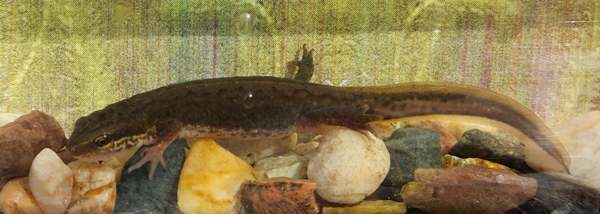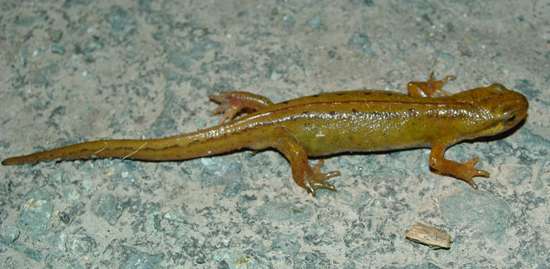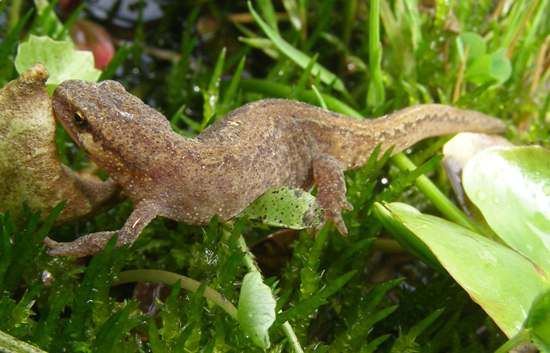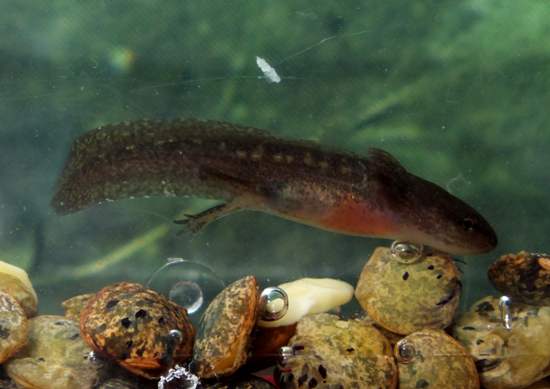Lissotriton vulgaris - Common Newt
Phylum: Chordata - Class: Amphibia - Order: Caudata - Family: Salamandridae
Identification - Distribution - Lifecycle - Food - Predators - Reference Sources

This is a female Common Newt, also known as a Smooth Newt, photographed during the breeding season. Common Newts are found in most unpolluted lowland ponds and slow-flowing streams in Britain.
Identification
These lovely little amphibians grow to a length of about 10 cm. Except during the breeding season, male and female Smooth Newts look very similar, with pale brown or yellowish-brown skins; however, the male has a single black line running down its spine while the female has two dark lines either side of the centre of its spine. (The specimen pictured below is a male.)

In the breeding season, the males become noticeably darker than the females and develop a wavy translucent crest along the spine and the tail, and the belly becomes bright orange - females also turn slightly orange in the belly but they remain much paler than the males. The spotted throats of Common Newts help distinguish them from Palmate Newts, whose throats are unspotted.
Distribution
Common Newts are ideed very common in Britain. If you live in an acid soil area and you have a garden pond with shallow, weed-fringed margins, there is a very good chance that this species will move in from the surrounding countryside.
Food
While in the water, Common Newts feed on aquatic insects such as Chironomus midge larvae and pupae; we have also seen them stalking (and succeeding in catching) paired Common Blue Damselflies that touch down on the surface to lay their eggs.

Predators
This specimen was found beside our garden pond in West Wales, where many fierce dragonfly larvae prey on anything that moves in the margins - and so taking up residence there does seem like a recipe for living dangerously, even for something as large as a newt!
Lifecycle
Common newts spend much of their time on land, but between early spring and mid-summer you may find them in the weedy, shallow water at the margins of ponds, lakes and slow-flowing rivers.
Just like other amphibians, young Common Newts are born in spring or early summer. They live in the water, surfacing occasionally for air, until mid to late summer, whereupon they clamber out and live among the damp vegetation at the water's edge.

At the 'tadpole stage (as seen above) the young are referred to as efts.
Fortunately, many terrestrial insects hatch in the autumn, and as they settle among the marginal grasses and plants some of them fail to recognise the danger presented by slow-crawling, fast-pouncing newts.
Reference Sources
Matching the Hatch by Pat O'Reilly (2017) - learn all about aquatic insects and other small water creatures that feature in the diet of newts.
Please Help Us: If you have found this information interesting and useful, please consider helping to keep First Nature online by making a small donation towards the web hosting and internet costs.
Any donations over and above the essential running costs will help support the conservation work of Plantlife, the Rivers Trust and charitable botanic gardens - as do author royalties and publisher proceeds from books by Pat and Sue.

